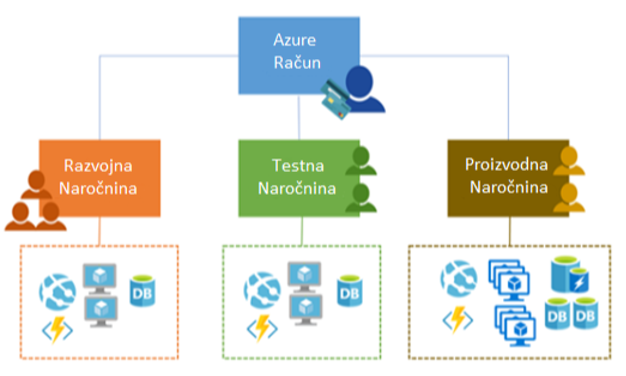We need hardware and software for the proposed system, as well as cloud services on the Microsoft Azure cloud platform. For the hardware we used: RuuviTag sensor platforms for measuring temperature, humidity and air pressure in the room. We used the Raspberry Pi as a gateway between the physical and digital worlds. The Raspberry Pi uses BLE communication to connect to sensors and the MQTT communication protocol to send messages to the Microsoft Azure cloud platform. We wrote the code in the Python programming language, which reads the sensor data, connects to the cloud platform, and sends the sensor data to the Microsoft Azure cloud platform. In order to achieve the best possible flexibility and easy upgrade of the system, we also set up a web application that allows you to add new sensors and new transitions to the system. We distributed the RuuviTag sensor platforms in several rooms at the FERI faculty. Thus, two platforms are located in space G216, two in space G215, and two in the Bacquerel (BQ) laboratory. All services on the Microsoft Azure cloud platform are accessed through the Azure Portal user interface. Azure Portal allows us to use and manage all the services offered by the Microsoft Azure cloud platform. The first service we used was the IoT Hub. The IoT Hub is a hub in the cloud that connects the physical gateway of the IoT system and other cloud services. Stream Analytics is available for fast and easy data transfer within the Microsoft Azure cloud platform. This service is not free (Free, or Students account), and if it was used continuously, its price would be around $ 87 for a period of one month. Therefore, we used the Azure Functions service to transfer data. With the help of the Power BI tool, we finally visualized the data that the sensor platforms send to the Microsft Azure cloud platform. In the Power BI Desktop environment, we first connected to an SQL server created on the Azure platform and obtained data using the ‘DirectQuery’ connection method. We then processed and used that data to produce a report that we published on the Power BI Service. Within the Microsoft Azure cloud platform, we can also create a quality weather forecasting system with the help of Stream Analytics, Azure Machine Learning Studio and artificial intelligence AI. For this purpose, the program code on the Raspberry Pi was also adapted for reading data from only one RuuviTag platform, namely only for reading temperature and humidity sensors, because in this case we only need these parameters. The Stream Analytics tool captures the data we send to the IoT Hub and then forwards it to the Blob Storage repository and also to the Power BI Service. On a dashboard created in the Power BI Service tool for real-time data, we can then monitor data on current temperature, humidity, and rain probability. Temperature and humidity data are obtained from sensors in the environment, and the probability of rain is calculated based on this data in the Machine Learning Studio service.










